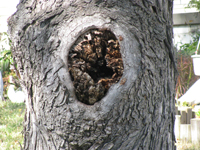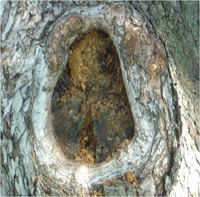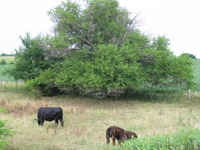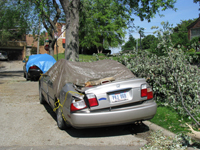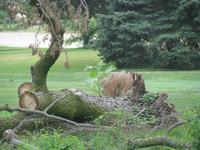G2111
Tree Hazard Awareness
This NebGuide will help property owners and managers become aware of possible defects on their trees, and how to obtain professional assistance to determine the appropriate course of action.
John C. Fech, Extension Educator; International Society of Arboriculture Certified Arborist; Pacific Northwest Chapter, International Society of Arboriculture Certified Tree Risk Assessor
- Do Your Trees Look Like This? Top 7 Signs That You May Need An Arborist’s Evaluation
- Importance of Targets
- Obtaining Professional Assistance
Do Your Trees Look Like This? Top 7 Signs That You May Need An Arborist’s Evaluation
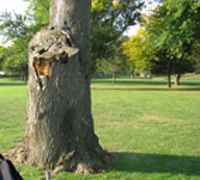 |
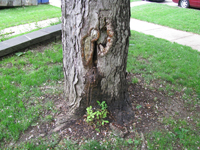 |
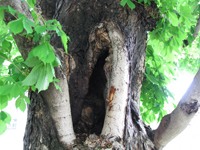 |
|||||
|
|||||||
| Decay. These trees are infected with wood decay fungi, which degrade the sturdiness of the heartwood, lessening its ability to provide structural support. | |||||||
 |
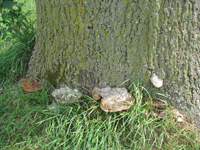 |
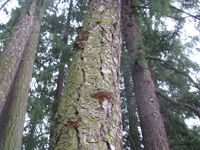 |
||
| Conks. Conks are growths that can occur on the bark. They are attached to decay organisms inside the trunk. Conks are important to note because they are outward indicators of hidden internal conditions. | ||||
 |
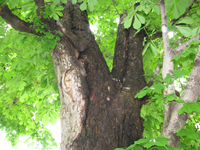 |
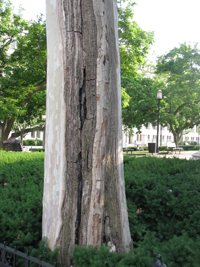 |
||
| Cracks. Perhaps the most critical tree defects, as they are a physical separation of the bark and sapwood. | ||||
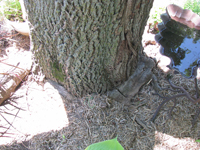 |
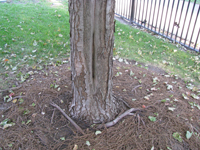 |
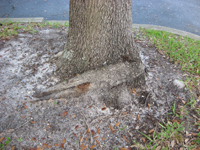 |
||
| Girdling Roots. Instead of expanding laterally, some roots wrap around the main trunk, compressing the bark. This restricts the transport of water and nutrients and creates a failure point in the lower trunk. When feasible, plant trees bare root so that roots can be visually checked for proper spread prior to planting. For containerized or ball and burlapped trees, check for and prune roots — where possible — that are in the early stages of growing adjacent to the trunk or in circular patterns. | ||||
 |
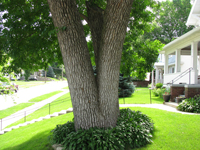 |
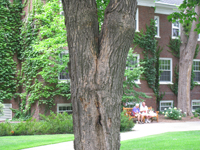 |
||
| Co-Dominant Leaders. Where this occurs, weak branch attachments to the trunk are created, increasing the likelihood of limb failure. Prevent this defect by pruning early in the tree’s development to eliminate the weakest of two leaders and enhance healthy adjustment to a single leader tree. | ||||
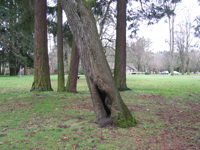 |
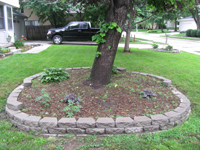 |
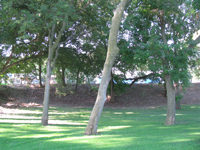 |
||
| Leaning. Leaning is not necessarily a defect. However, when a tree’s angle of lean increases over time, the chance for failure is significant. | ||||
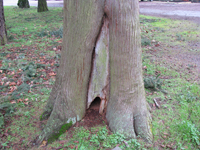 |
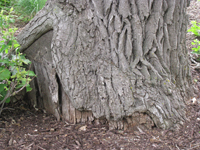 |
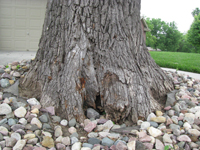 |
||
| Root Plate Defects. Buttress roots, basal bark, and sapwood tissues are critical to the overall stability of a tree. When these are damaged, the potential for failure of the trunk is increased. Use care around the base of trees to avoid injury from lawn mowers and string trimmers. | ||||
Obtaining Professional Assistance
If any of the defects depicted in this NebGuide match defects in your trees, contact an ISA (International Society of Arboriculture) or NAA (Nebraska Arborists Association) Certified Arborist to determine if the defects pose a risk to your property or yourself. Certified arborists have specialized training and experience in evaluating tree defects and hazards. Contact them at:
ISA — http://www.isa-arbor.com/faca/findArborist.aspx
NAA — http://www.nearborists.org/search_for_arborist
This publication has been peer reviewed.
Visit the University of Nebraska–Lincoln Extension Publications website for more publications.
Index: Lawn & Garden
Ornamentals
Issued December 2011
